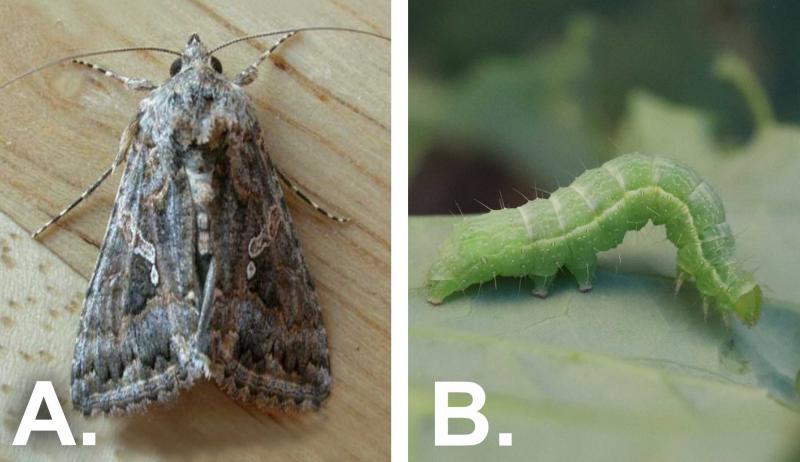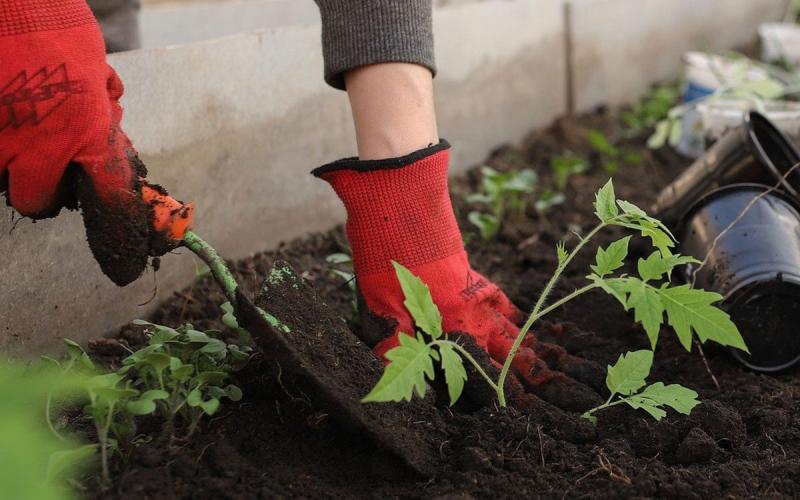
Cabbage looper caterpillars have been spotted in South Dakota gardens. Like their name suggests, cabbage loopers primarily feed on cabbage as well as broccoli, cauliflower, kale, radish, turnip and other cruciferous crops. They can also feed on other garden produce including cucumber, lettuce, pea, pepper, potato, spinach, squash, sweet potato, tomato and watermelon plants. However, most of the injury and the largest populations will be on the crucifers.
In South Dakota, there are approximately 2-3 generations each year. That means the caterpillars that are feeding now may not be the last ones we see. Fortunately, cabbage looper populations tend to vary dramatically from year to year. Therefore, we might not see as many caterpillars next year.
Cabbage looper caterpillars feed on leaves, leaving behind irregular shaped holes. The larger the caterpillar, the larger the holes they will leave on a leaf. When cabbage loopers first hatch, they feed on the bottom of leaves and will not be able to feed through the leaf. Although cabbage loopers do feed on garden plants, they don’t usually cause enough defoliation to warrant management. If cabbage looper caterpillars are observed on a plant, we recommend picking them and destroying them. There may be other defoliators present on these crops, so it is important to do routine scouting.
Identification
Cabbage looper moths are mottled gray and brown and have silvery white spots on their forewings (Figure 1). The caterpillars are pale green with a white stripe on each side of their body. They have two pairs of prolegs (legs in the middle of their bodies). When disturbed, the caterpillars will make a loop shape with their bodies.


